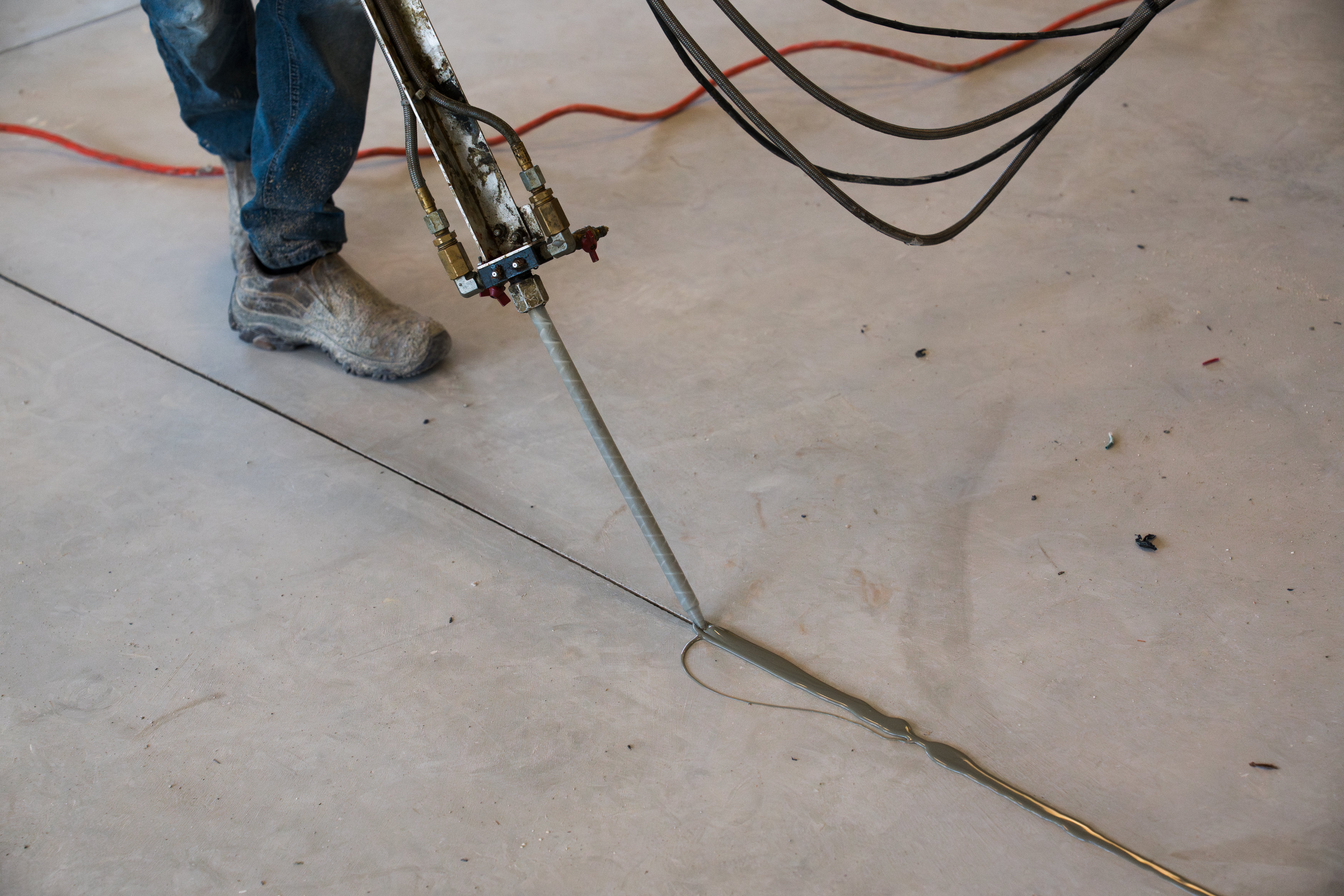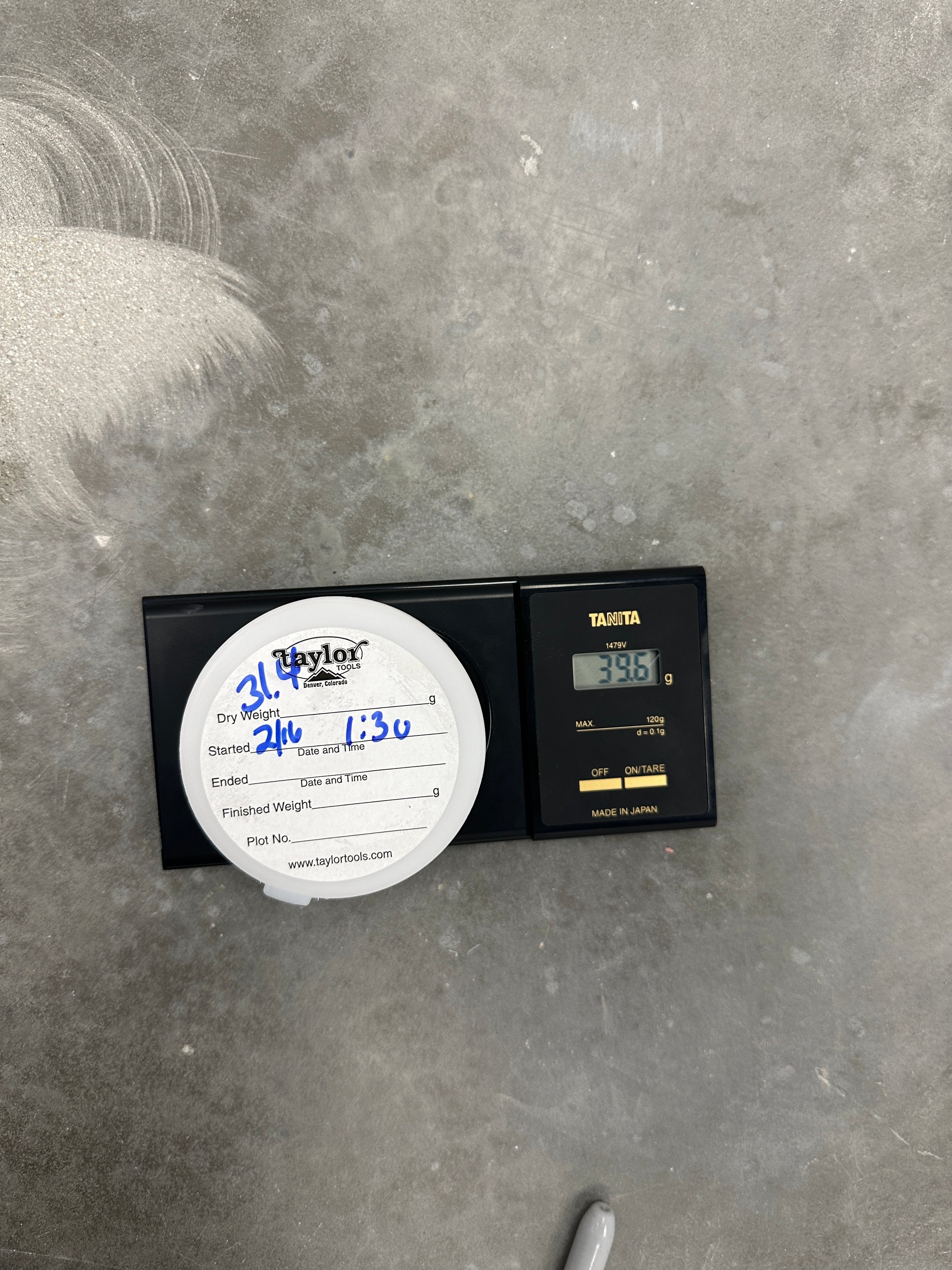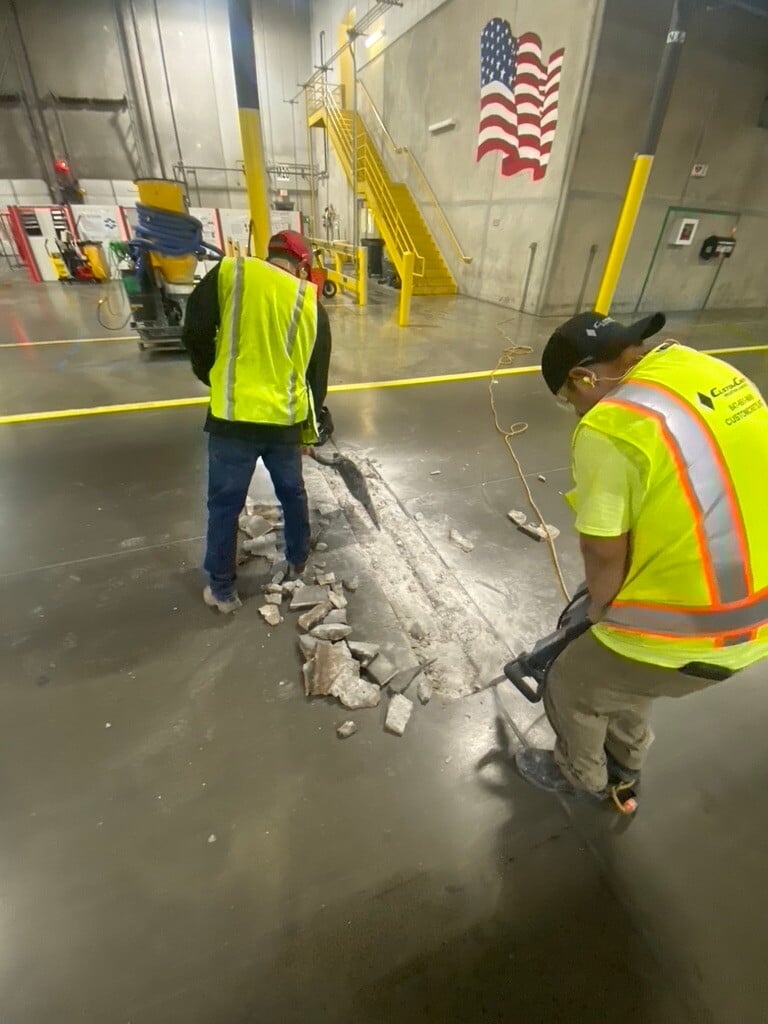
When it comes to coating concrete floors, moisture is one of the most important—and most overlooked—factors. Even if your concrete looks dry, hidden moisture within the slab can wreak havoc on a new floor coating. Peeling, bubbling, discoloration, and coating failure are all risks when concrete moisture levels aren’t properly tested and managed.
At CustomCrete, we’ve seen firsthand how overlooked moisture can derail even the most carefully planned flooring project. That’s why we test every slab and apply proven moisture mitigation systems when needed—helping our clients avoid coating failures and costly rework.
In this blog, we’ll break down what moisture levels are too high for concrete coatings, how moisture testing works, and what your options are if your concrete isn’t ready for coating just yet.
Why Concrete Moisture Levels Matter
Concrete is a porous material, which means it naturally holds and transmits moisture. If there’s too much moisture trapped in the slab or moving up from the ground below, it can interfere with how well coatings bond to the surface.
Even moisture you can’t see can cause:
- Coating delamination – The bond between the coating and slab breaks down.
- Blistering or bubbling – Moisture vapor pushes up under the coating.
- Staining or discoloration – Moisture reacts with coating materials or brings up minerals.
- Bacterial growth – Persistent dampness creates a perfect environment for mold or mildew.
That’s why it’s critical to measure concrete moisture levels before installation—especially for epoxy, urethane, or other resinous coatings.
What Moisture Level Is Considered Too High?
Most concrete coatings have a moisture tolerance limit. While the exact threshold depends on the product being used, here’s a general rule of thumb:
- Less than 3–5 lbs/1,000 sq ft/24 hrs (via Calcium Chloride Test)
- Less than 75–85% Relative Humidity (via RH Probe Testing)
If your test results come in above those numbers, your concrete is considered too moist for most standard coatings.
A Closer Look at Moisture Testing Methods
There are two main tests used to measure concrete moisture levels:
- Calcium Chloride Test (MVER – Moisture Vapor Emission Rate)
- Measures the amount of moisture vapor released from the slab surface over a 24–72 hour period.
- Ideal for surface-level testing.
- Expressed in lbs per 1,000 square feet per 24 hours.
- Relative Humidity Test (ASTM F2170 RH Testing)
- Uses probes inserted into the slab to measure internal moisture.
- Provides a more accurate picture of long-term moisture behavior.
- Expressed as a percentage of RH inside the slab (should be under 75–85% for most coatings).
- Tramex Concrete Moisture Encounter (Non-Destructive Test)
- A handheld electronic meter that scans the slab’s surface using electrical impedance.
- Offers fast, non-invasive readings that can help locate problem areas quickly.
- While not as comprehensive as MVER or RH testing, it's useful for preliminary assessments and spot checks.
Both tests are important and often used together. They help contractors decide if a slab is “safe” to coat—or if mitigation is needed.
What Causes High Moisture Levels in Concrete?
There are several reasons why your concrete slab might retain too much moisture:
- Inadequate curing time – Fresh concrete needs time to dry out.
- No vapor barrier – Without a proper moisture barrier beneath the slab, water from the ground can seep in.
- Climate and humidity – Damp climates or high humidity can slow drying or add moisture from the air.
- Improper drainage – Surface water around the building can enter through cracks or slab edges.
What Happens If You Coat Concrete That's Too Moist?
Applying a floor coating to concrete with high moisture levels is a gamble. Even if it looks okay at first, problems can appear weeks or months later.
Some of the most common issues include:
- Peeling or flaking
- Bubbling and blisters under the surface
- Milky or hazy appearance (moisture trapped beneath clear coatings)
- Foul odors or mold issues from trapped water vapor
In most cases, once a coating fails due to moisture, the only fix is full removal and reapplication—an expensive and time-consuming process.
What Can Be Done If Moisture Is Too High?
If your test results show that your concrete moisture levels are too high, don’t panic. There are several solutions available, depending on the severity of the issue:
1. Wait and Retest
If the slab is newly poured or recently exposed to water, sometimes it just needs more time to dry. Contractors may wait 1–2 weeks and retest.
2. Apply a Moisture Mitigation System
These are specialty coatings or primers (often epoxy- or urethane-based) that are designed to block moisture vapor from rising into the floor system. They bond well even on damp concrete and create a sealed surface for your final topcoat.
3. Install a Vapor Barrier (Before Pouring)
For new construction or slab replacements, installing a vapor barrier beneath the concrete is the best way to prevent moisture problems long-term.
4. Improve Drainage or Sealing
Make sure water isn’t getting in from exterior sources. Cracks, gaps, and poor building drainage can all contribute to recurring issues.
Why Professional Testing and Prep Matter
Concrete moisture levels aren’t something to guess at. Without accurate testing, even the best epoxy or urethane coating can fail. That’s why working with a contractor who understands the science behind coatings—and invests in moisture testing—is critical.
At CustomCrete, we regularly test concrete moisture before every major flooring project. Our team uses ASTM-compliant testing methods to make sure your new coating is built to last. If moisture is too high, we recommend solutions based on your facility’s conditions and long-term goals.
Final Thoughts
Concrete coatings can add beauty, durability, and function to your floors—but only if the surface underneath is properly prepared. High concrete moisture levels are one of the top reasons for coating failure, and avoiding that starts with awareness and testing.
Whether you’re installing a new floor or upgrading an existing space, don’t skip the moisture check. It could be the difference between a lasting investment and a costly redo.
Need help evaluating your slab before coating? Read our next article, “Pros and Cons of a Moisture Vapor Barrier (MVB)”.
Topics:




.jpg?width=1200&height=1600&name=Copy%20of%20IMG_1457%20(1).jpg)














